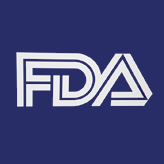FDA Approves Blinatumomab for Acute Lymphoblastic Leukemia
The FDA has approved blinatumomab (Blincyto) for the treatment of patients with Philadelphia chromosome-negative precursor B-cell acute lymphoblastic leukemia.
This is the first FDA-approved anti-CD19 agent.

The US Food and Drug Administration (FDA) has approved blinatumomab (Blincyto) for treating patients with Philadelphia chromosome (Ph)-negative precursor B-cell acute lymphoblastic leukemia (ALL), a rare form of the disease wherein a patient’s bone marrow makes too many B-cell lymphoblasts. The drug is intended for patients with relapsed or refractory disease.
Blinatumomab is a “bispecific CD19-directed CD3 T-cell engager that activates endogenous T cells when bound to the CD19-expressing target cell,” according to the FDA. It is the first anti-CD19 agent approved by the regulatory agency.
“Immunotherapies, especially Blincyto with its unique mechanism of action, are particularly promising for patients with leukemia,” said Richard Pazdur, MD, director of the Office of Hematology and Oncology Products in the FDA’s Center for Drug Evaluation and Research, in a press release. “Recognizing the potential of this novel therapy, the FDA worked proactively with the sponsor under our breakthrough therapy designation program to facilitate the approval of this novel agent.”
This year in the United Stated an estimated 6,020 patients will be diagnosed with ALL, and 1,440 will die from the disease, according the National Cancer Institute.
The trial that led to the approval of blinatumomab (Protocol MT103-211) was a multicenter, single-arm trial that involved 185 adults with relapsed or refractory Ph-negative precursor B-cell ALL.
Patients received blinatumomab, administered by continuous infusion for 4 weeks of a 6-week cycle. Up to 2 cycles were used for induction and 3 cycles for consolidation. Results showed that 32% of participants achieved complete remission for about 6.7 months (0.46–16.5 months). Thirty-one percent of patients achieved complete remission with or without complete hematologic recovery but with reduction in minimal residual disease to less than 10-4.
The most common adverse events in patients who received blinatumomab were constipation (20%), tremor (20%), rash (21%), hypokalemia (23%), peripheral edema (25%), febrile neutropenia (25%), nausea (25%), headache (36%), and pyrexia (62%). Neurologic toxicity occurred in approximately 50% of patients and was a frequent cause of therapy interruption. Cytokine release syndrome was reported in 11% of the patients-these included life-threatening or fatal events. Blinatumomab carries a boxed warning regarding this syndrome and neurologic toxicities.
As the drug comes with serious risks and the potential for errors in administration and preparation, the FDA has approved blinatumomab with a Risk Evaluation and Mitigation Strategy (REMS).
Newsletter
Stay up to date on recent advances in the multidisciplinary approach to cancer.
Highlighting Insights From the Marginal Zone Lymphoma Workshop
Clinicians outline the significance of the MZL Workshop, where a gathering of international experts in the field discussed updates in the disease state.